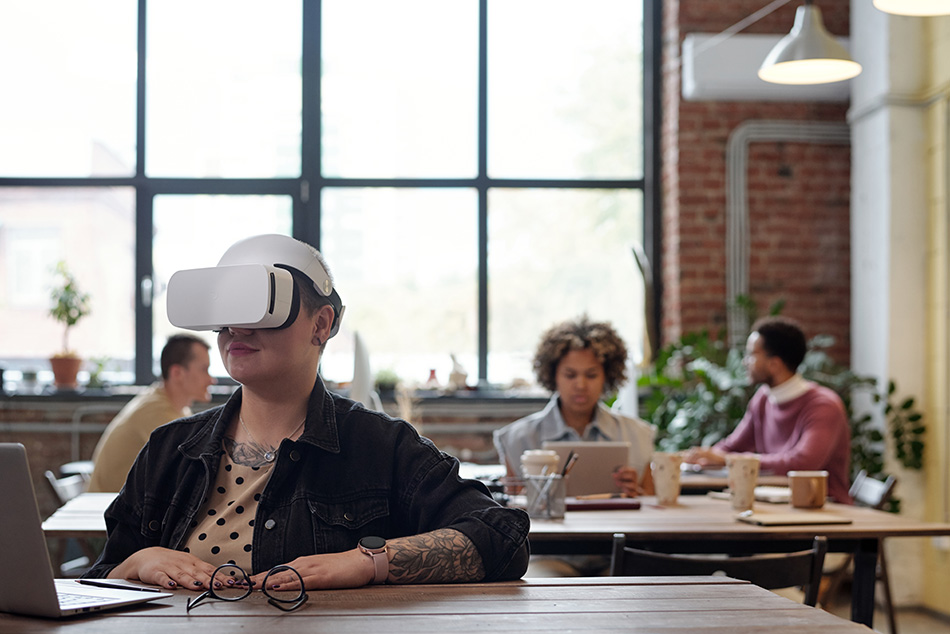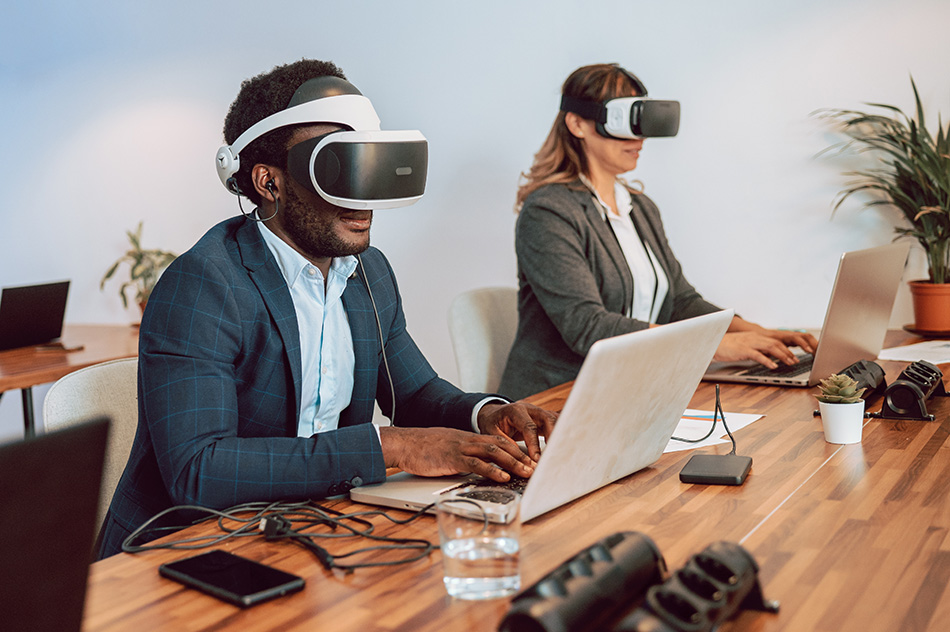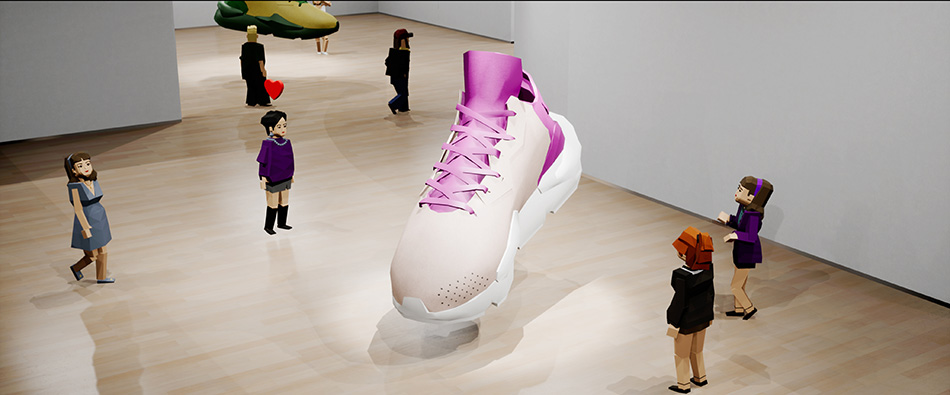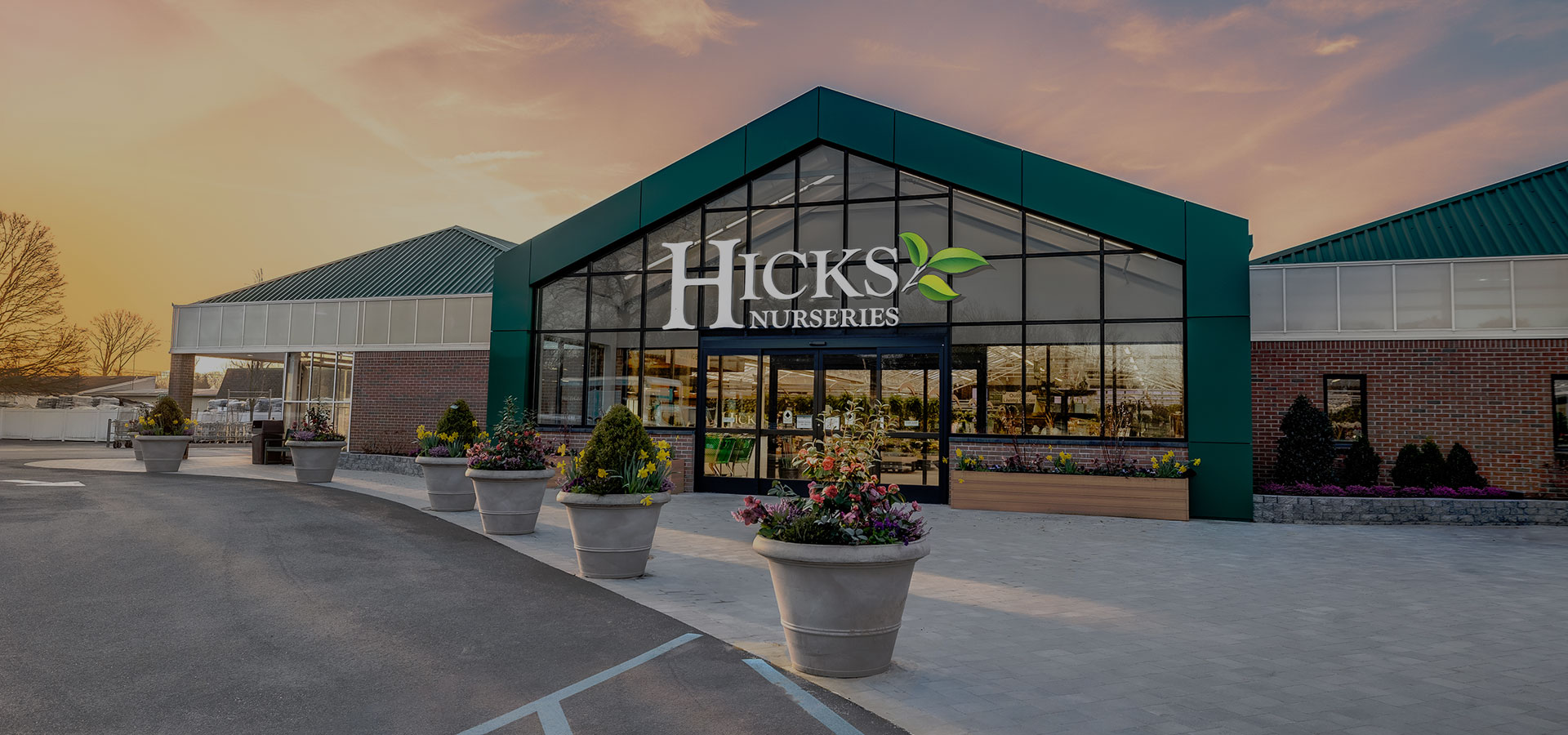The Metaverse is taking shape right now, and brands are moving quickly to place their stamp on the platform. At its simplest, the Metaverse is defined as a single home to VR, AR, and immersive digital experiences that consumers can enjoy from anywhere at any time. A unique market on its own, Metaverse reports consist of speculation and trends, such as expected growth to $800 billion by 2024. In media fashion, highlights around the economics of the Metaverse reign supreme. There is something that piqued our interest, though, which is why people don’t seem to be interested in the Metaverse. Even today, the Metaverse is an estimated $40 billion dollar industry. What we find most astonishing, though, is the Metaverse isn’t a sophisticated enough platform to own a simple definition. It’s different on a case-by-case basis, whether that is by the brand or the individual. We’re keeping an eye on the ways the Metaverse might shape our future, how interactions within the virtual world might bleed into reality, and the role that design thinking could play in turning a beta-concept into a valuable resource.
But the question is:
does anyone care about the metaverse?

Evidence would say, nope… not really.
In November of 2021, a survey discovered that roughly 68% of US adults are not interested in the metaverse project. A few common reasons were, that people would rather not be the subject of constant advertising, face the army of bots that have already overtaken our social media platforms, or take any personal data risks on a new and unsecured platform. There isn’t a clear benefit to partaking in the metaverse, and the immediate future isn’t promising. Metaverse architecture today is poorly constructed and is modeled as a beta reflection of our own world. Not to mention, many current video games already build on this idea better than the Metaverse.
Experience-wise, the journey is clunky and varies from site to site. Design / aesthetic-wise, we’re taking a major step back from the many years of technological success in virtual worlds. Each metaverse is independently constructed, with no way for people to seamlessly jump between worlds or experiences. This hurdle will take many years to overcome and would require a brand big enough to develop one for us all to join… we’re talking Meta, Apple, or Google big. As if it wasn’t complicated enough, there’s a variety of different cryptocurrencies that the Metaverse floats on, none of which are particularly stable. MANA, the primary currency used in Decentraland, saw a 500% increase in November of 2021. Since then, there’s been a steady decrease back down 500%, and it doesn’t appear it will stop falling anytime soon. Between market instability, a lack of general knowledge, and an overall lackluster execution, the hearty conclusion is of general disinterest from the public. So far.
And yet, the metaverse still matters
As the metaverse starts rolling out, it will most likely look and operate in similar fashion to our own societies. Through familiar structure, the public will be able to avoid mass confusion and (somewhat) easily integrate the platform into daily life. The key is uncovering how to bridge the gap between reality and digital. That said, the Metaverse’s greatest asset is the ability to bring the imaginary to life, and we can’t lose sight of that. The boundless possibility it holds can bring relevancy to everyone’s lives and spark interest in an otherwise indifferent public.
Companies such as PrecisionOS are using the metaverse for education and visual exploration. Full-scale human models are being developed, and these intricate systems/organs are major assets for medical students and professionals alike. The technology is becoming a useful informational tool, illustrating health problems for patients and detailing treatment methods, conditions, or even surgery processes.

Other brands are exploring the metaverse as a sort of digital office, with private meetings, presentations, and even fun social interaction as a byproduct. Design and architecture has been an afterthought to this point, but the possibilities allow for new realities of design that are unique to the Metaverse. A $500m market in its own right, Metaverse real estate is growing rapidly.
Office & virtual work experiences could be the first to benefit from a world-class digital design that inspires users to participate. With an uptick in work-from-home lifestyles, don’t be surprised if brands take a stab at creating their own virtual workspaces in the Metaverse.
We can see it now, a world of unbelievable interior design, accompanied by unique Metaverse architecture, sponsored by brands like Vanity Fair & Architectural Digest. Reality replicant metaverse experiences may even spark a new sense of wanderlust, boosting travel and tourism as users seek out IRL versions of destinations they’ve only experienced virtually.
Building the bridge through design thinking
Truth is, the Metaverse’s missing ingredient is thoughtful, yet thorough design thinking. Translating the complexity and fragmentation of the metaverse into something worth exploring starts with design, whether that be the environments, the experience, or even an interface. Placing the user as the priority when ideating, refining, and building the metaverse will create a tool that the public wants to use. Considering the variety of functions and purposes of the Metaverse, a functional interface with intuitive navigation would encourage us to venture into the unknown. Journey mapping, wire framing and prototyping could phase out the inconsistent user issues the Metaverse currently faces.

What it all means right now
Pairing functionality with purpose is a great reason for the public to take interest in the Metaverse and could be vital to the growth of the platform(s) today. Designers can help optimize the Metaverse and play a pivotal role in bringing the public to these new environments. Between medical, professional, personal, and even economic use, there’s no denying beneficial possibilities exist for the public. If designed right, the Metaverse can become one of our most valuable assets in the coming decades. With a little inspiration, purpose-driven creativity, and design thinking, the Metaverse may bear fruit in worlds of necessity. In order for that to happen, the experience needs to be designed with humans in mind, paired with an easily accessible out-of-this-world user experience… (see what we did there?)





